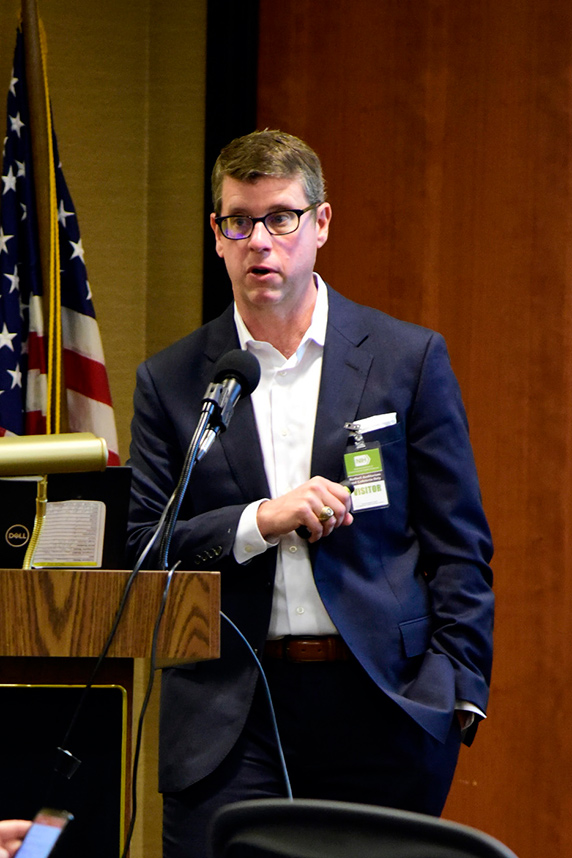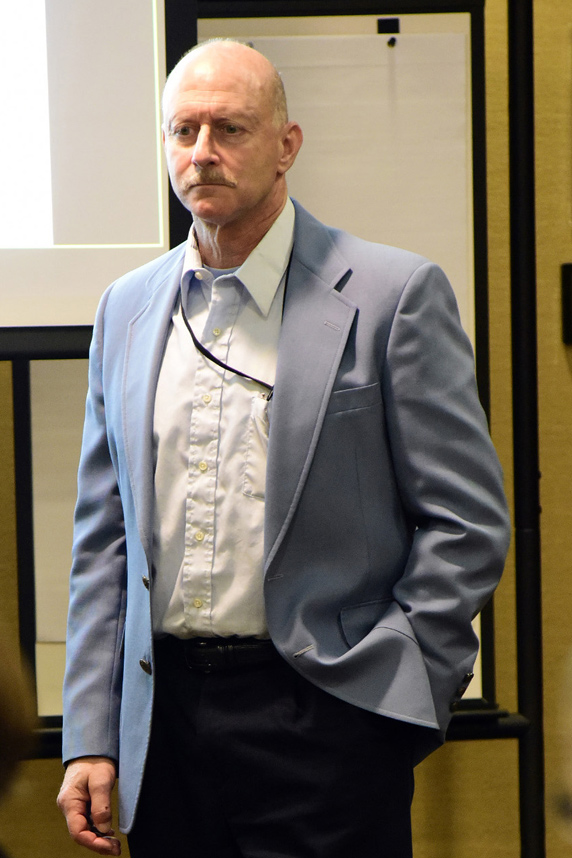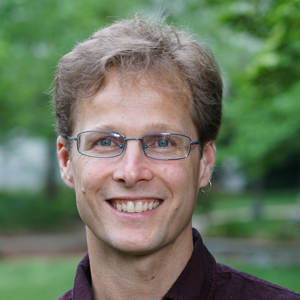 The dynamic effects of circadian rhythms and molecular clock genes need to be accounted for when estimating exposures, Porter explained. (Photo courtesy of Steve McCaw)
The dynamic effects of circadian rhythms and molecular clock genes need to be accounted for when estimating exposures, Porter explained. (Photo courtesy of Steve McCaw)The body’s responses to carcinogenic compounds vary dramatically depending on the time of day it is exposed, according to research presented by Weston Porter, Ph.D., an NIEHS grantee at Texas A&M University. Porter spoke April 23 on “The Role of the Molecular Clock in Metabolism and Development.”
His talk, which was part of the NIEHS Keystone Science Lecture Seminar Series, was hosted by Les Reinlib, Ph.D., from the Exposure, Response, and Technology Branch.
From the time of Renaissance physician Paracelsus to today, one of the basic tenets of toxicology has been that the dose makes the poison, or that toxicity depends on level of exposure. Now, thanks to the work of researchers like Porter, the field is realizing there’s more to it. In terms of evaluating chemical exposures, the question of when must be answered along with what and how much.
Time of day matters
Porter presented detailed evidence from his lab’s experiments in mice and cell lines that exposures to carcinogenic compounds at different times of day result in dramatically different responses.
“What we found was that a different time of day dictates how the carcinogens called polyaromatic hydrocarbons, or PAHs, are metabolized, how they are toxic, and how they can induce DNA damage,” Porter explained.
Circadian clock genes such as period 2 (PER2) are involved in the process, and Porter has been able to document some of the molecular pathways that play a role in the differential responses. For example, he discovered a novel role for the clock in normal mammary gland development. Porter focused on the role of PER2 levels in breast cancer.
In studies with mice, Porter found that PER2 is critical to regulating the major tumor suppression gene p53. “If you lose PER2, you lose p53, and therefore you get an increase in genomic instability,” he noted. Genomic instability is known to be a hallmark of cancer development.
“At certain times of day, you’re going to have a really good p53 response, while at other times of day, it will be lower. So you’re going to have changes in your genomic instability associated with the time of day [of exposure],” Porter observed.
Wider impacts
 Reinlib noted that Porter is one of the few scientists looking at circadian rhythms in the context of environmental health. (Photo courtesy of Steve McCaw)
Reinlib noted that Porter is one of the few scientists looking at circadian rhythms in the context of environmental health. (Photo courtesy of Steve McCaw)The implications of Porter’s discoveries are profound for toxicology and environmental health, as understanding of gene-environment interactions becomes more sophisticated and more personalized.
“As we go forward and we look at screening many compounds, we need to take into account that circadian rhythm plays a very important role in metabolism, DNA damage, and other factors,” he said. With such a dynamic impact on physiologic factors, Porter believes that time of day should become a standard element for characterizing potentially toxic compounds.
The time of day issue is particularly relevant to certain vulnerable populations, such as shift workers whose circadian clocks are disrupted and refinery workers who are routinely exposed to PAHs.
“If you’re on shift work, specifically going in and out of shift, during that transition before you have adjusted, you might be in a susceptible position at that point, so you need to be more careful about what you’re being exposed to,” Porter cautioned.
With dramatic changes in gene expression over the course of the day, the time element also needs to be considered when evaluating biopsies from women with breast cancer, he added.
Citation: Lunn RM, Blask DE, Coogan AN, Figueiro MG, Gorman MR, Hall JE, Hansen J, Nelson RJ, Panda S, Smolensky MH, Stevens RG, Turek FW, Vermeulen R, Carreon T, Caruso CC, Lawson CC, Thayer KA, Twery MJ, Ewens AD, Garner SC, Schwingl PJ, Boyd WA.. 2017. Health consequences of electric lighting practices in the modern world: A report on the National Toxicology Program's workshop on shift work at night, artificial light at night, and circadian disruption. Sci Total Environ (607–608):1073–1084.
(Ernie Hood is a contract writer for the NIEHS Office of Communications and Public Liaison.)









